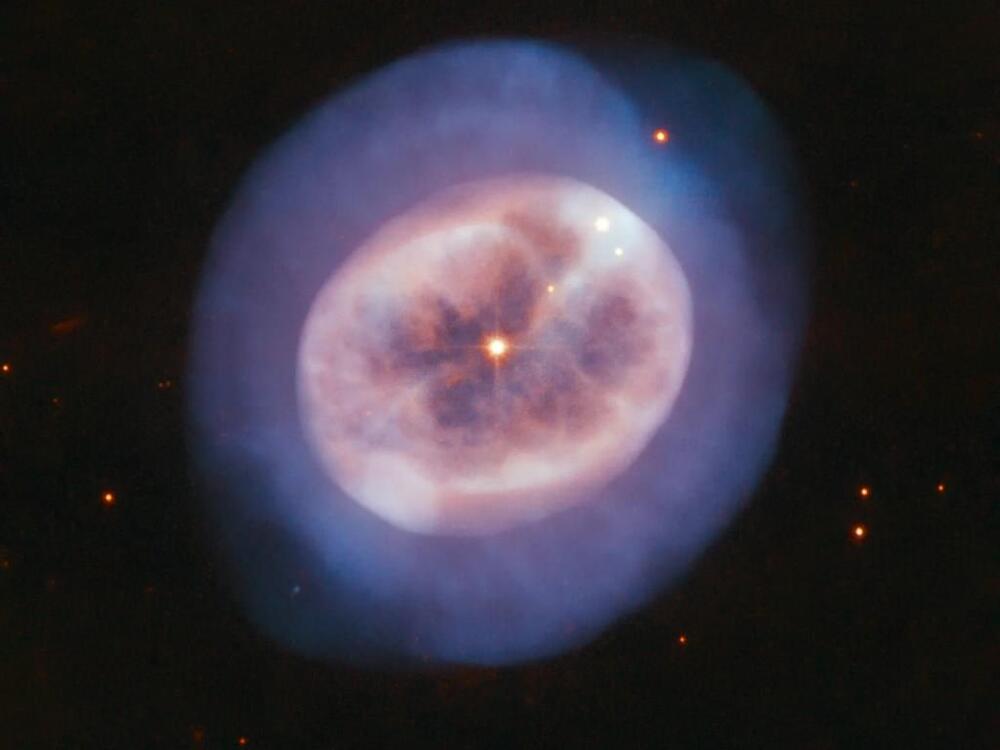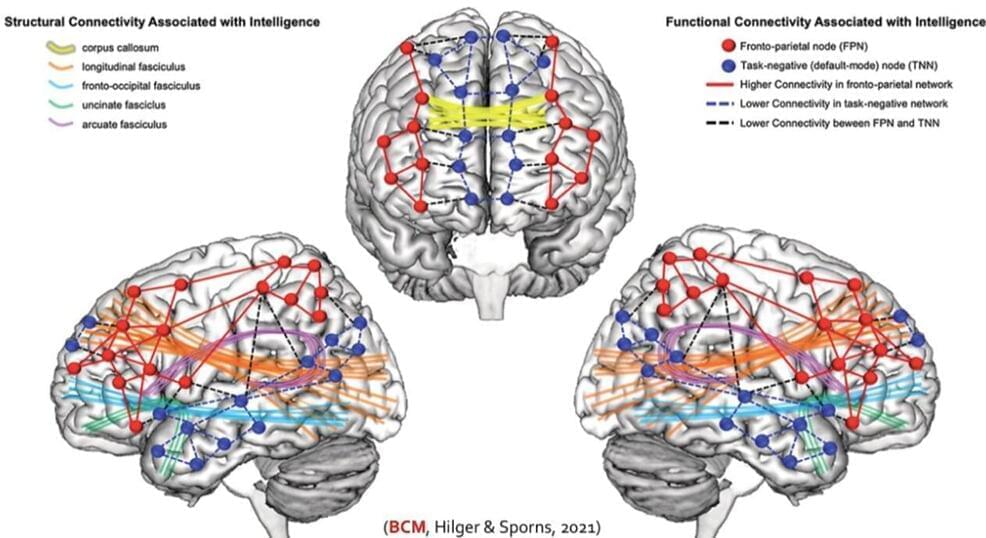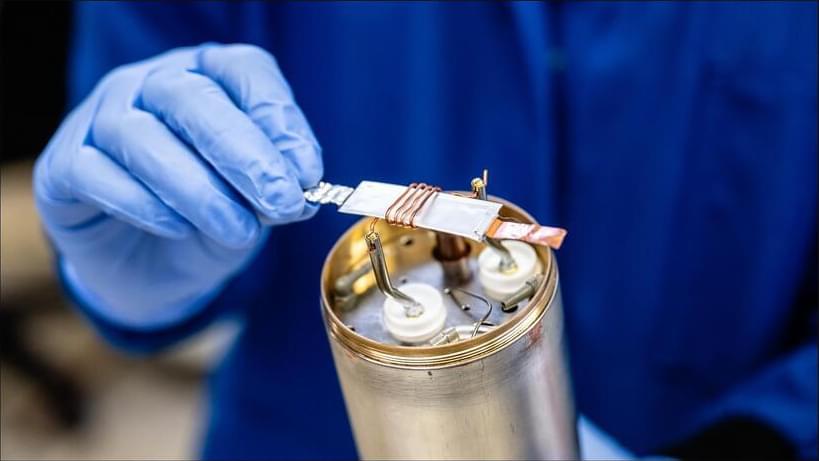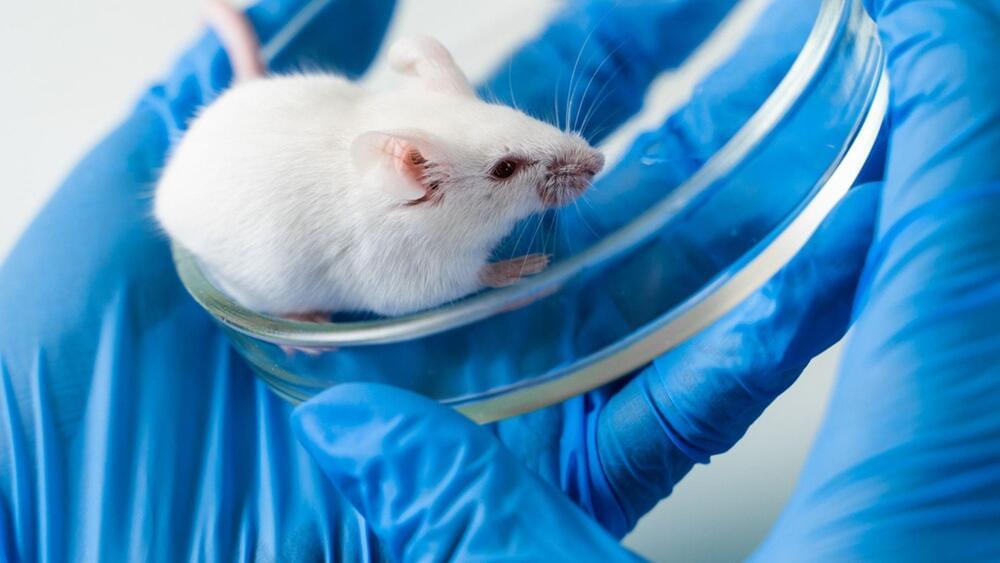Although it looks more like an entity seen through a microscope than a telescope, this rounded object, named NGC 2022, is certainly not algae or a tiny, blobby jellyfish. Instead, it is a vast orb of gas in space, cast off by an aging star. The star is visible in the orb’s center, shining through the gases it formerly held onto for most of its stellar life.
Humanity’s quest for answers has a new ally: Google’s Willow chip — a quantum chip that outpaces the fastest supercomputers by septillions of years! Imagine solving problems regular computers take years for—like creating life-saving medicines, predicting weather, or designing tech we haven’t dreamed of yet. But with great power comes challenges: high costs, logistics, and even risks to cybersecurity. The quantum revolution has begun, but the big question is—how will we use this power? Palki Sharma tells you.
Google | willow | quantum chip | firstpost | world news | news live | vantage | palki sharma | news.
#google #quantumchip #willow #firstpost #vantageonfirstpost #palkisharma #worldnews.
Vantage is a ground-breaking news, opinions, and current affairs show from Firstpost. Catering to a global audience, Vantage covers the biggest news stories from a 360-degree perspective, giving viewers a chance to assess the impact of world events through a uniquely Indian lens.
The show is anchored by Palki Sharma, Managing Editor, Firstpost.
However, while Google’s achievements have been noted for advancing the field, experts say that quantum computing still has no real-world uses — yet.
“We need a ChatGPT moment for quantum,” Francesco Ricciuti, associate at venture capital firm Runa Capital, told CNBC on Tuesday, referencing OpenAI’s chatbot that has been credited with driving the boom in artificial intelligence. “This is probably not that.”
Proponents of quantum computing claim it will be able to solve problems that current computers can’t.
AI can predict human intelligence by looking at the connections of a working human brain. Neuroscientists can predict intelligence from brain structure and function—to a point. Previous studies have suggested that intelligence is widely distributed across the brain.
Kirsten Hilger and colleagues used machine learning models to predict multiple kinds of intelligence from brain connections of 806 healthy adults while resting and while completing tasks. The article is published in PNAS Nexus.
Fluid intelligence includes inductive and deductive reasoning abilities that do not rely on context, while crystallized intelligence reflects the ability to apply knowledge from individual experience and culture. General intelligence captures both types of intelligence.
Researchers at the U.S. Department of Energy’s (DOE) Argonne National Laboratory have developed and demonstrated an innovative set of methods to evaluate long-term aging in real-world battery cells. The methods, described in a recent paper, are based on a phenomenon called nuclear magnetic resonance (NMR), commonly used in medical imaging. This is the first-ever NMRspectroscopy capability that can track in fine detail how the chemistry of commercial pouch battery cells evolves over years of operation.
Argonne develops a novel method that uses nuclear magnetic resonance spectroscopy to characterize the chemical evolution inside battery cells over years of operation.
A new gene therapy can reverse the effects of heart failure and restore heart function in a large animal model. The therapy increases the amount of blood the heart can pump and dramatically improves survival, in what a paper describing the results calls “an unprecedented recovery of cardiac function.”
Currently, heart failure is irreversible. In the absence of a heart transplant, most medical treatments aim to reduce the stress on the heart and slow the progression of the often-deadly disease. But if the gene therapy shows similar results in future clinical trials, it could help heal the hearts of the 1 in 4 people alive today who will eventually develop heart failure.
OpenAI has released Sora Turbo, an AI video generator, to the public. It offers faster, high-definition video creation up to 22 seconds. Available to ChatGPT Plus and Pro subscribers, it includes safeguards against misuse. Currently, it is not available in European and British markets.
OpenAI on Monday released the latest version of its highly anticipated Sora video generator to the public, stepping into an increasingly crowded field of AI tools that has raised concerns about disruption to creative industries.
The company behind ChatGPT said its latest version, dubbed Sora Turbo, offers significant speed improvements over the February preview model and can create high-definition videos lasting up to 22 seconds.
While tech giants Google and Meta have also announced similar video tools, none have yet met the huge expectations set for AI since the launch of ChatGPT two years ago.
Google has unveiled a quantum computing chip, “Willow,” capable of performing tasks in minutes that would take supercomputers 10 septillion years. This breakthrough in error correction marks a significant step towards practical quantum computing, with potential applications in drug discovery, fusion energy, and climate change solutions.
Google on Monday showed off a new quantum computing chip that it said was a major breakthrough that could bring practical quantum computing closer to reality.
A custom chip called “Willow” does in minutes what it would take leading supercomputers 10 septillion years to complete, according to Google Quantum AI founder Hartmut Neven.
“Written out, there is a 1 with 25 zeros,” Neven said of the time span while briefing journalists. “A mind-boggling number.”
The study revealed key insights into the variability of responses to drug use, even among individuals with identical environmental conditions.
Just as the metaverse industry finally began its breakthrough, ChatGPT’s launch in November 2022 proved a technological avalanche. Amid post-pandemic economic pressures, companies pivoted away from metaverse aspirations to AI adoption, seeking immediate returns through automation and virtualization.
Apple’s 2023 entry into the space with Vision Pro VR headset has similarly faced challenges. At $3,499, with limited content and a sparse developer ecosystem, Apple struggles to find its market. Early projections suggest initial production runs of fewer than 400,000 units.
What if we’ve been looking for the metaverse in the wrong places? While Meta, HTC and Sony have so far struggled to establish their vision of a VR-first digital world, gaming platforms like Roblox quietly built what might be the actual metaverse.









